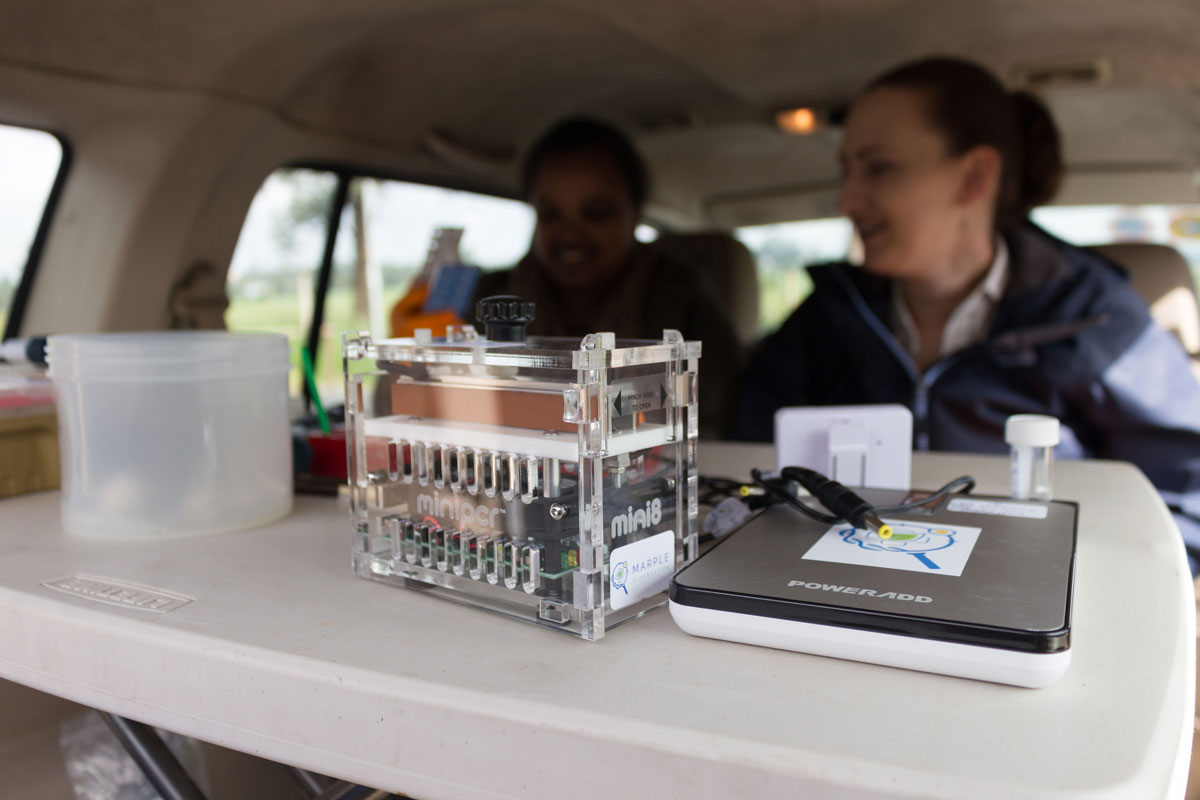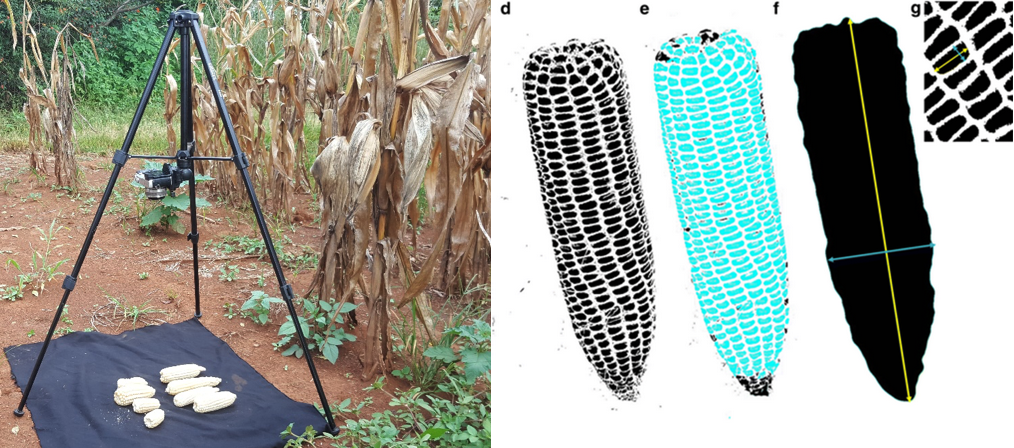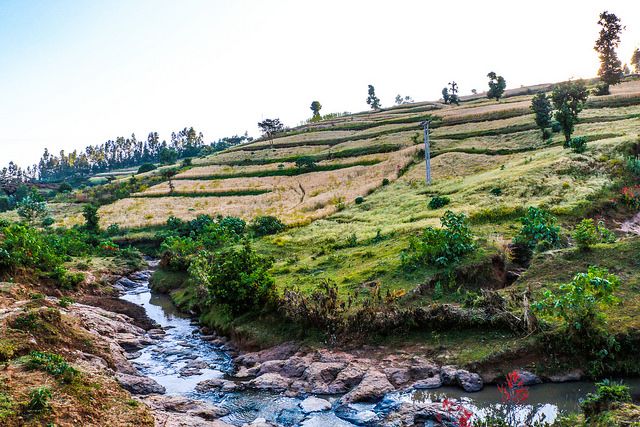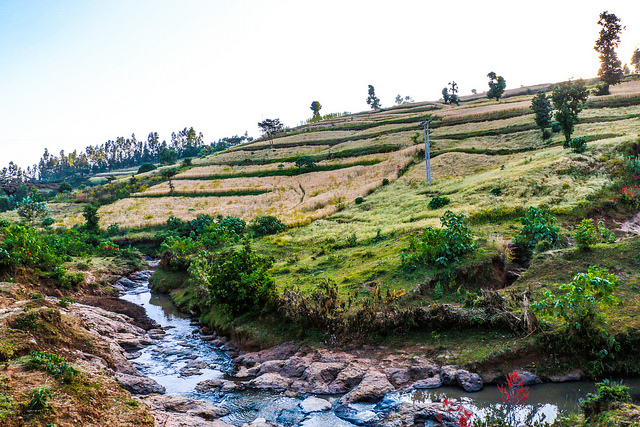MARPLE team recognized for international impact

The research team behind the MARPLE (Mobile And Real-time PLant disEase) diagnostic kit won the International Impact category of the Innovator of the Year 2019 Awards, sponsored by the United Kingdom’s Biotechnology and Biological Sciences Research Council (BBSRC).
The team — Diane Saunders of the John Innes Centre (JIC), Dave Hodson of the International Maize and Wheat Improvement Center (CIMMYT) and Tadessa Daba of the Ethiopian Institute for Agricultural Research (EIAR) — was presented with the award at an event at the London Science Museum on May 15, 2019. In the audience were leading figures from the worlds of investment, industry, government, charity and academia, including the U.K.’s Minister of State for Universities, Science, Research and Innovation, Chris Skidmore.
The BBSRC Innovator of the Year awards, now in their 11th year, recognize and support individuals or teams who have taken discoveries in bioscience and translated them to deliver impact. Reflecting the breadth of research that BBSRC supports, they are awarded in four categories of impact: commercial, societal, international and early career. Daba, Hodson and Saunders were among a select group of 12 finalists competing for the four prestigious awards. In addition to international recognition, they received £10,000 (about $13,000).
“I am delighted that this work has been recognized,” Hodson said. “Wheat rusts are a global threat to agriculture and to the livelihoods of farmers in developing countries such as Ethiopia. MARPLE diagnostics puts state-of-the-art, rapid diagnostic results in the hands of those best placed to respond: researchers on the ground, local government and farmers.”
On-the-ground diagnostics
The MARPLE diagnostic kit is the first operational system in the world using nanopore sequence technology for rapid diagnostics and surveillance of complex fungal pathogens in the field.
In its initial work in Ethiopia, the suitcase-sized field test kit has positioned the country — one of the region’s top wheat producers — as a world leader in pathogen diagnostics and forecasting. Generating results within 48 hours of field sampling, the kit represents a revolution in plant disease diagnostics. Its use will have far-reaching implications for how plant health threats are identified and tracked into the future.
MARPLE is designed to run at a field site without constant electricity and with the varying temperatures of the field.
“This means we can truly take the lab to the field,” explained Saunders. “Perhaps more importantly though, it means that smaller, less-resourced labs can drive their own research without having to rely on a handful of large, well-resourced labs and sophisticated expertise in different countries.”
In a recent interview with JIC, EIAR Director Tadessa Daba said, “we want to see this project being used on the ground, to show farmers and the nation this technology works.”

Development of the MARPLE diagnostic kit was funded by the Biotechnology and Biological Sciences Research Council (BBSRC) and the CGIAR Platform for Big Data in Agriculture’s Inspire Challenge. Continued support is also provided by the BBSRC’s Excellence with Impact Award to the John Innes Centre and the Delivering Genetic Gain in Wheat project, led by Cornell University and funded by the UK’s Department for International Development (DFID) and the Bill & Melinda Gates Foundation.
More information on the award can be found on the JIC website, the BBSRC website and the website of the CGIAR Research Program on Wheat.





